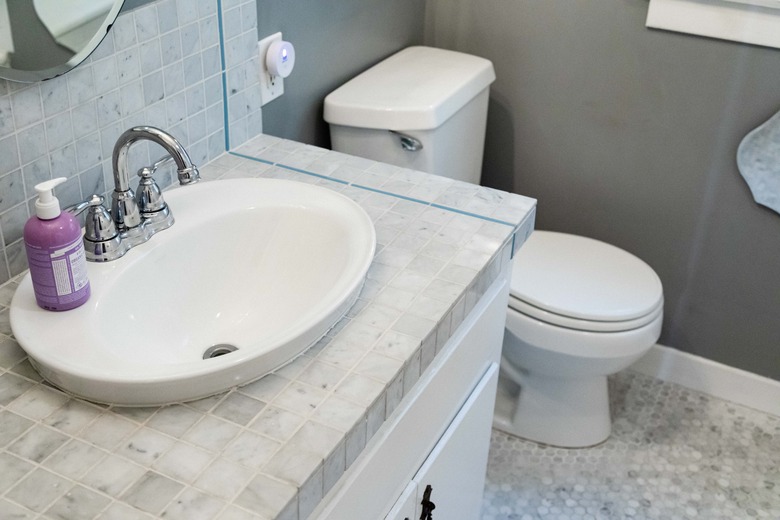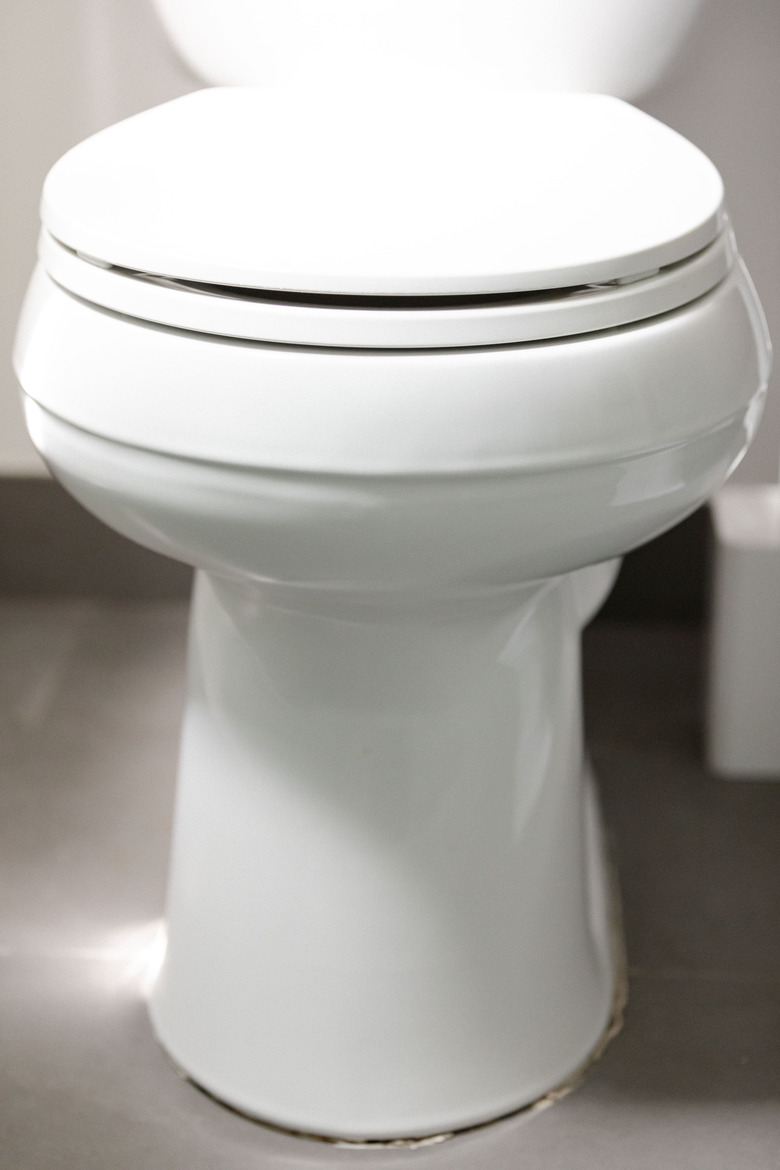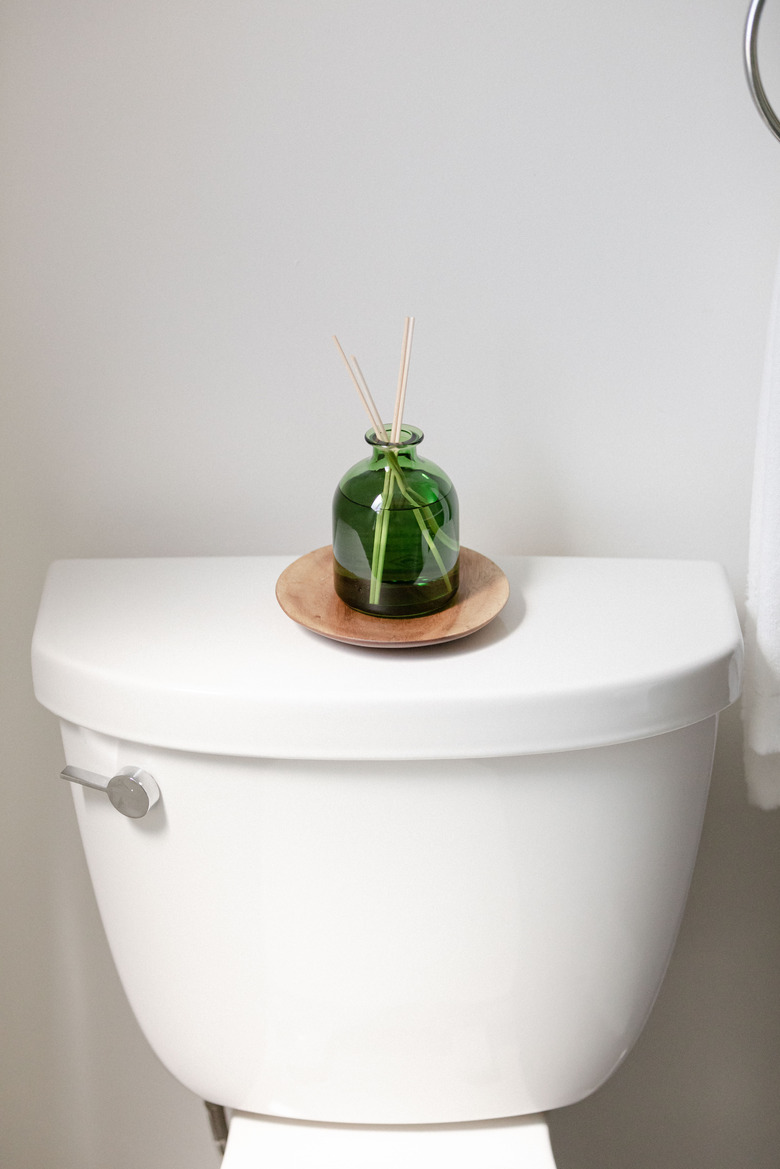Upflush Toilets For Basements: What You Should Know
Do you want to build a bathroom in the basement, but you don't know how to drain the toilet, sink and shower because the sewer lines run above the basement floor? That's what upflush toilets for basements are designed to handle.
Unlike a regular toilet, an upflush toilet doesn't depend on gravity, and unlike a composting, chemical or incinerating toilet, it uses plain old water and doesn't require you to handle waste remnants. Even better, you can buy a model that will handle the drainage from your sink and shower, which completely eliminates the need for expensive modifications to your sewer line.
An Upflush Toilet Is Also Known as a Macerating Toilet
An Upflush Toilet Is Also Known as a Macerating Toilet
Unlike a gravity toilet, which empties into a 3- or 4-inch hole in the floor, an upflush toilet empties out the rear into a holding tank that contains a macerator and a pump. When the tank reaches a preset level, a sensor switches on the power, and stainless steel blades reduce the waste to a slurry that the pump forces through a 3/4- to 1-inch PVC discharge pipe tied into the sewer.
The macerating pump on less expensive models can handle human waste and toilet paper, and that's about it, but a premium model with a grinder pump can handle larger items, such as feminine hygiene napkins. Premium models also include auxiliary inputs for the sink and shower drain.
Upflush Toilets for Basements: Pros
Upflush Toilets for Basements: Pros
Upflush toilets can solve most of the problems of basement drainage, and installing them is a DIY project that's far easier than roughing-in and installing standard toilets. Those are two big pluses, but there's more:
- Design flexibility: There's no need to install a sewer, so you can put your bathroom anywhere, and you can put the toilet anywhere in the basement bathroom. If you need more space in the bathroom, you can install the macerator pump tank behind the wall.
- Cleanliness: Upflush toilets have a pool of water in the bowl and operate just like standard toilets. The toilet bowl is made of easy-to-clean porcelain.
- Durability: Saniflo, a leading manufacturer, says its products last 10 or 15 years, but lab tests have found its products to remain operable through more than 50,000 cycles. If you use the toilet five times a day, this suggests it could last for almost 30 years.
- Portability: Because an upflush toilet is so easy to install and uninstall, you can use it as a temporary facility and move it to another location when it has served its purpose.
Upflush Toilets for Basements: Cons
Upflush Toilets for Basements: Cons
Of course, no product comes without drawbacks, and upflush toilets have a few:
- Electricity-dependent: Because the macerator pump runs on electricity, you can't use the toilet if the power goes out during a storm. If you don't have one already, you need to install a power outlet within reach of the toilet's power cord, but that's a lot easier than installing a new sewer.
- Noisy: Although manufacturers make efforts to design quiet pumps, the noise they make is still noticeable. This is especially true with models that employ a grinder pump.
- Clog prone: Flush anything down the toilet that you aren't supposed to flush and you have a clog on your hands. This can be a real problem if the macerator is hidden behind the wall and you forgot to provide access.
- Finicky: You must flush the toilet regularly, perhaps as often as once a day, to keep the pump primed. If you go on vacation, you'll probably have to reprime the pump before you can use the toilet.
Who Makes Upflush Toilets for Basements
Who Makes Upflush Toilets for Basements
The leading name in upflush toilets is Saniflo, which makes several models, including the Sanicompact, a one-piece unit with a hidden macerator, and the Saniplus and Sanibest Pro, heavy-duty models with detached tanks and optional extension pipes that allow you to install the toilet tank behind the wall. The Sanibest Pro, which is the most heavy-duty Saniflo toilet, has a space-saving round bowl, inlets for the shower and sink — which make it an ideal toilet system for a full bathroom — and a powerful pump that can lift waste 25 feet.
Liberty Pumps, the main competitor, makes two models, one with a round bowl and one with an elongated bowl. Its RazorCut macerating blades are the sharpest available and chop up waste quickly and efficiently, and like the Saniflo models, it uses only 1.6 gpf. Its main drawbacks, according to The Best Flushing Toilet, are that it's more difficult to install, and the pump is loud.
Two other manufacturers, Thetford and Lift Assure, manufacture units suitable for dual use in basements and recreational vehicles. The Lift Assure model has a powerful pump that can process up to 3.8 gallons per minute, while the Thetford model's small and underpowered pump is more suited for an RV than a basement bathroom.
Installation of Upflush Toilets for Basements
Installation of Upflush Toilets for Basements
An upflush toilet kit usually comes with all the hardware and connectors you need for installation, and you have to supply 3/4- or 1-inch PVC drain line depending on the model, 1 1/2-inch PVC vent piping and 2-inch PVC pipe for fixture drain connections. All these pipes connect to the macerator, not the bowl.
The discharge pipe connects to a reducing fitting that you clamp to the outlet port on the top of the macerator, and you can extend that a maximum of 15 to 25 feet high (depending on the model) and a maximum horizontal distance of 150 feet to tie into the sewer. The vent pipe gets clamped to the other port on the top of the macerator and rises in the wall to connect the building's vent network.
After clamping the 2-inch waste pipes from fixture drains to the macerator inlets, you connect the bowl by clamping on the flexible connector supplied with the kit. The water supply hose, which is the same type as the one for a conventional toilet, gets screwed onto the toilet tank and to the water supply shut-off valve. Then, you screw the toilet bowl to the floor with the supplied lag screws, plug in the macerator and you're done.
Care and Maintenance
Care and Maintenance
Saniflo claims that its products are maintenance-free, but you could say the same for conventional toilets, and any plumber can tell you that isn't true. In fact, upflush toilets may require even more maintenance than conventional ones because online reviews suggest that they clog frequently. The clog is usually in the macerator, so most units are provided with an access panel for clearing the blades. Also, keep in mind that the flush mechanism requires periodic service, just like that of a conventional toilet.
You have to be careful about what you put in any toilet, especially if your house is on a septic system, but that's especially true for upflush toilets. When the blades have to work hard to process waste, they dull quickly and may need early replacement. Also, don't forget to flush the toilet as frequently as recommended by the manufacturer so you don't have to reprime the macerator pump.



